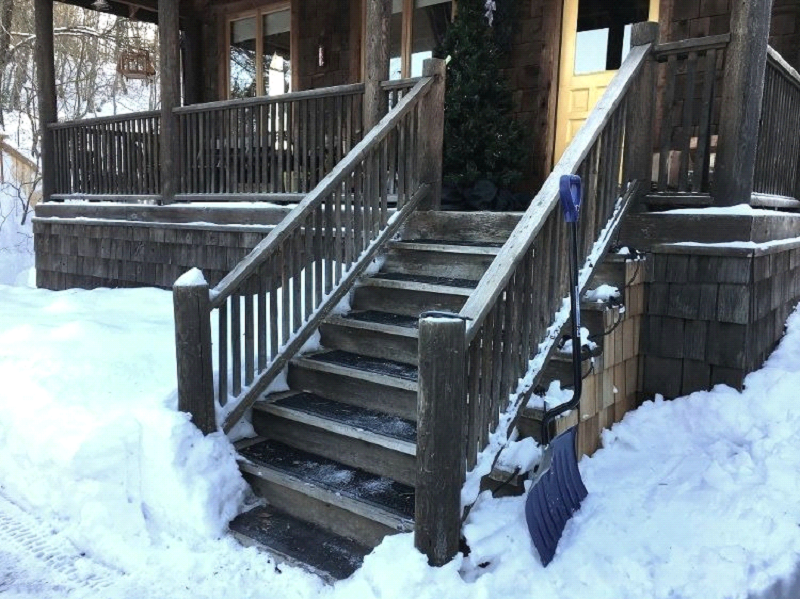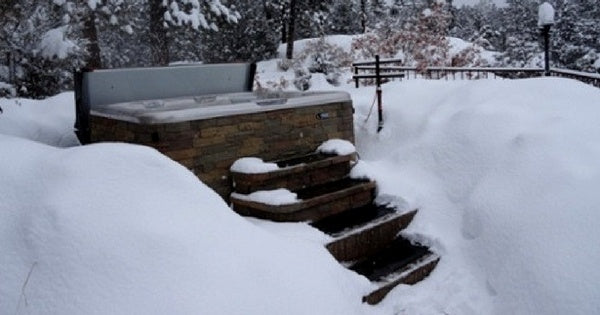 Is it wise to leave your HeatTrak snow melting mats running all winter? How long will it take before this kind of long-term use wears them out?
Is it wise to leave your HeatTrak snow melting mats running all winter? How long will it take before this kind of long-term use wears them out?
We frequently hear from our customers that they want to understand more about how heated snow melting mats work and how they fare with long-term use. I want to take this opportunity to answer these questions, and also to address how best to run these mats during the winter season.
Let's take a closer look.
Q: Can I leave my snow melting mats outdoors throughout winter?
Absolutely. Our residential mats are designed to remain outdoors all winter long. They’re made from rubber and thermoplastic materials durable enough to withstand severe winter weather conditions and heavy daily foot traffic.
Not only can they stay outside throughout the season, but they won’t wear out if you leave them running. The mats maintain a temperature 40 degrees above the ambient air, so if your window thermometer is reading 20 degrees Fahrenheit, for example, your mat will be heated to about 60 degrees.
Q: Is it necessary to keep the mats running the entire winter season?
Definitely not, although you can if you want to. If you choose to switch them off, we of course recommend that you turn them back on before the snow begins to fall in order to prevent any buildup. When you do this, the snowflakes will evaporate as soon as they hit the mats.
Nevertheless, we’ve all experienced how weather can be unpredictable. If you can’t get to your HeatTrak mats until after the snowfall is underway, they’ll still do their job melting snow at an average rate of 2 inches per hour, but the snow already accumulated on them will take awhile to evaporate.
The easiest way to set up your HeatTrak mats is to have an electrician wire the outlet to a switch inside your home or to a snow sensor controller. That way, you’ll be able to simply turn the mats on and off from indoors. If you choose this option, we suggest you keep the mats plugged into the outlet all season.
Q: If I choose to switch them off, how soon should I turn the mats on before a snowfall?
It depends on what ground surface your mats are lying on, but stone- or cement-based surfaces typically retain heat, so you can extend the level of snow melting coverage beyond your heated mats. Surfaces such as wood do not have this property and so snow melting coverage is limited to the area directly under the mats.
If you switch on the mats for a full day before it begins to snow, the heat from the mats will absorb into the ground surface and spread to a radius of two inches beyond the mat. On the other hand, if you turn the mats on right before snowfall arrives, you’ll notice snow buildup on the perimeter of the mat. This is because there are no heating elements built into this area of the mat.
If you turn on HeatTrak mats any time prior to a snowstorm, But while there may be snow around the perimeters, you won’t find any water accumulation due to snow evaporating when it lands on the mat.
If you can’t get to your mats until after the snow has begun, there will be some water runoff, but it will be directed into the snow surrounding the mats, leaving behind small puddles until the water completely evaporates.
But don’t worry, these puddles won’t present any safety risks. They pool underneath the non-slip treading in order to protect you from slips and falls while you walk across the mats.
Did you find this information helpful? Do you have another other questions about HeatTrak mats? Share your thoughts in the comments box below and we’ll get back to you with an answer.


